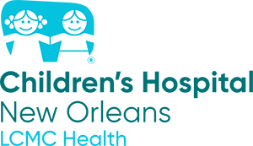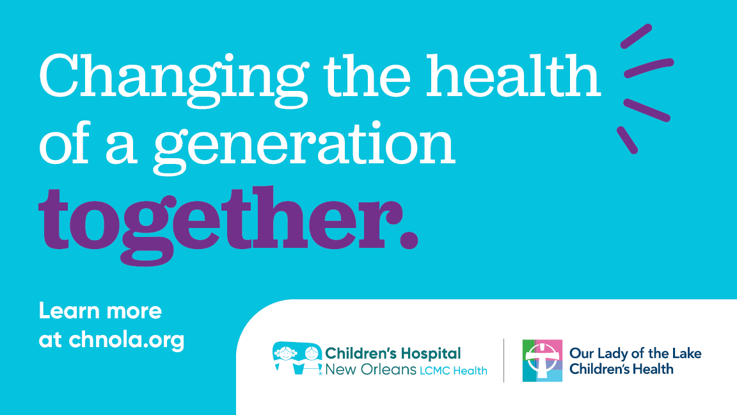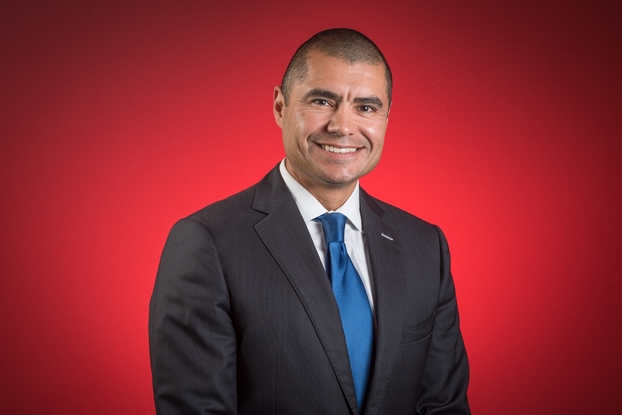July is National Cleft and Craniofacial Awareness Month
- Category: Living Well
- Posted on:

July is National Cleft and Craniofacial Awareness Month. The American Cleft Palate-Craniofacial Association (ACPA; https://acpa-cpf.org/) is raising awareness about patients living with a facial difference nationwide, as well as the specialized care and resources the association and its members provide during the typically long and challenging treatment regimen. Join us in raising cleft and craniofacial awareness at Children’s Hospital of New Orleans!
As the largest ACPA-accredited team in the Gulf South, the Children’s Hospital of New Orleans Craniofacial Center treats the full spectrum of congenital and acquired facial differences. Please reach out to our office at 504-856-9857 extension 2 or craniofacialcenter@lcmchealth.org to schedule an appointment and discover what sets our patient care apart!
What are craniofacial anomalies?
Craniofacial anomalies (CFA) are a diverse group of deformities in the growth of the head and facial bones. Anomaly is a medical term meaning "irregularity" or "different from normal." These abnormalities are present at birth (congenital) and there are numerous variations. Some are mild and some are severe and need surgery. Some craniofacial anomalies are associated with anomalies elsewhere in the body, which can be serious.
What causes craniofacial anomalies?
Most medical professionals agree that there is no single factor that causes these types of abnormalities. Instead, there are many factors that may contribute to their development, including the following:
Combination of genes. A child may receive a particular combination of gene(s) from one or both parents. Or, there may be a change in the genes at the time of conception. This results in a craniofacial anomaly.
Environmental. The effect of environmental exposures on the development of craniofacial abnormalities is not fully understood. However, environmental exposures may play a role, especially in combination with genetic abnormalities.
Folic acid deficiency. Folic acid is a B vitamin found in orange juice, fortified breakfast cereals, enriched grain products, and green, leafy vegetables. Studies have shown that women who do not take sufficient folic acid during pregnancy, or have a diet lacking in folic acid, may have a higher risk of having a baby with certain congenital anomalies. These include cleft lip and cleft palate.
What are the most common types of craniofacial anomalies?
Some of the most common types of craniofacial anomalies include the following:
Cleft lip and/or cleft palate. A separation that happens in the lip or the palate (roof of the mouth), or both. Cleft lip and cleft palate are the most common congenital craniofacial anomalies seen at birth.
Cleft lip. An abnormality in which the lip does not completely form. The degree of the cleft lip can vary greatly, from mild (notching of the lip) to severe (large opening from the lip up through the nose).
Cleft palate. Happens when the roof of the mouth does not completely close, leaving an opening that can extend into the nasal cavity. The cleft may involve either side of the palate. It can extend from the front of the mouth (hard palate) to the throat (soft palate). The cleft may also include the lip.
Craniosynostosis. A condition in which the sutures (soft spots) in the skull of an infant close too early. This causes problems with normal brain and skull growth. Premature closure of the sutures may also cause the pressure inside of the head to increase and the skull or facial bones to change from a normal, symmetrical appearance.
Hemifacial microsomia. A condition in which the tissues on one side of the face are underdeveloped. This mostly affects the ear (aural), mouth (oral), and jaw (mandibular) areas. Sometimes, both sides of the face can be affected and may involve the skull and the face. Hemifacial microsomia is also known as Goldenhar syndrome, brachial arch syndrome, facio-auriculo-vertebral syndrome, oculo-auriculo-vertebral spectrum, or lateral facial dysplasia.
Vascular malformation. A birthmark or growth, present at birth, that is composed of blood vessels. It can cause functional or aesthetic problems. Vascular malformations may involve multiple body systems. There are several different types of malformations and they are named according to which type of blood vessel is mostly affected. Vascular malformations are also known as lymphangiomas, arteriovenous malformations, and vascular gigantism.
Hemangioma. A hemangiomas is an abnormally growing blood vessel in the skin that may be present at birth (faint red mark) or appear in the first months after birth. A hemangioma is also known as a port wine stain, strawberry hemangioma, and salmon patch.
Deformational (or positional) plagiocephaly. A misshapen (asymmetrical) shape of the head from repeated pressure to the same area of the head. Plagiocephaly literally means "oblique head" (from the Greek "plagio" for oblique and "cephale" for head).



